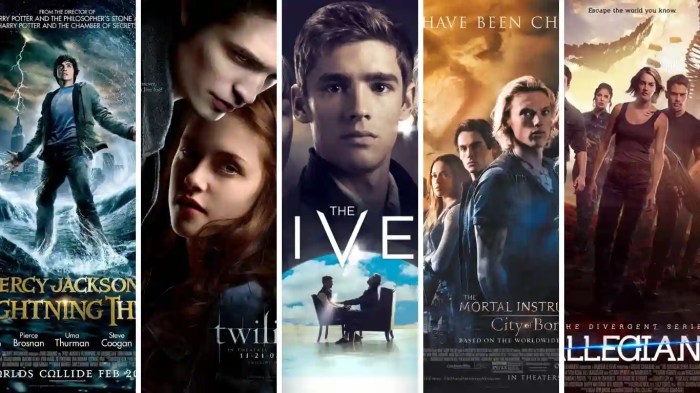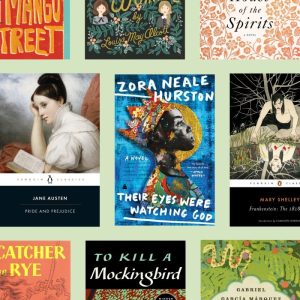Dive into the fascinating world of Book-to-Movie Adaptations, where beloved stories come to life on the big screen, captivating audiences worldwide.
From the intricate process of adaptation to the challenges faced, this topic explores the magic of transforming literature into cinematic masterpieces.
Book-to-Movie Adaptations

Adapting a book into a movie is a complex process that involves condensing a lengthy narrative into a two-hour visual format. It requires careful selection of key plot points, character development, and themes to convey the essence of the story effectively on screen.
Successful Book-to-Movie Adaptations
- The Lord of the Rings Trilogy: Director Peter Jackson successfully adapted J.R.R. Tolkien’s epic fantasy novels by staying true to the source material while making necessary changes for cinematic purposes. The attention to detail in world-building and character arcs contributed to the films’ success.
- Gone Girl: Director David Fincher’s adaptation of Gillian Flynn’s thriller maintained the book’s suspenseful atmosphere and clever plot twists, keeping audiences engaged until the end. The faithful adaptation of the unreliable narrator added to the film’s intrigue.
Challenges in Adapting Complex Novels into Films
- Pacing: Condensing a detailed novel into a two-hour movie often requires cutting out subplots and characters, which can impact the overall depth of the story.
- Tone and Atmosphere: Capturing the mood and tone of a book through visual storytelling can be challenging, as readers often form their own interpretations based on the text.
Differences Between Book and Movie Versions
- Character Development: Books have the luxury of delving into a character’s thoughts and emotions, while movies must rely on visual cues and dialogue to convey the same depth.
- Plot Changes: Adaptations may alter the sequence of events or omit certain scenes to fit the movie’s runtime, leading to deviations from the original story.
Literature and Libraries
Libraries play a crucial role in promoting literature and reading by providing access to a wide range of books, resources, and educational programs for people of all ages. They serve as community hubs that foster a love for reading, learning, and creativity.
Role of Libraries in Promoting Literature and Reading
Libraries serve as a gateway to literature by offering a diverse collection of books, including classic literature, contemporary fiction, non-fiction, and children’s books. They provide a space for people to explore different genres, authors, and topics, encouraging a lifelong love for reading. Additionally, libraries often host book clubs, author events, and reading programs that promote literacy and a deeper appreciation for literature within the community.
Importance of Preserving Classic Literature in Libraries
Preserving classic literature in libraries is essential for ensuring that future generations have access to the literary works that have shaped our culture and society. Classic literature provides valuable insights into different time periods, cultures, and human experiences, helping readers develop empathy, critical thinking skills, and a broader perspective on the world. By preserving and promoting classic literature, libraries contribute to the preservation of our collective literary heritage.
Impact of Technology on the Accessibility of Literature in Modern Libraries
Technology has revolutionized the way literature is accessed and consumed in modern libraries. E-books, audiobooks, online databases, and digital resources have made it easier for people to access a wide range of literary works from anywhere at any time. Libraries now offer digital lending services, virtual book clubs, and online resources that cater to the digital needs of readers, expanding access to literature beyond the physical walls of the library.
Innovative Library Programs Promoting Reading and Literacy
Libraries have developed innovative programs to promote reading and literacy in communities, such as summer reading challenges, literacy workshops, storytelling sessions, and mobile library services. These programs aim to engage readers of all ages, backgrounds, and interests, fostering a culture of reading and learning within the community. By offering creative and engaging programs, libraries play a vital role in promoting literacy and a love for literature among diverse populations.
End of Discussion

In conclusion, Book-to-Movie Adaptations offer a unique blend of creativity and storytelling, bridging the gap between written words and visual storytelling for a truly unforgettable experience.
Frequently Asked Questions
What are some key challenges in adapting complex novels into films?
Adapting intricate plots and rich character development from a book to a movie format while maintaining the essence of the story can be a major challenge for filmmakers.
How do successful book-to-movie adaptations impact the popularity of the original book?
Successful adaptations often lead to renewed interest in the original book, boosting its popularity and introducing it to new audiences who may not have discovered it otherwise.




